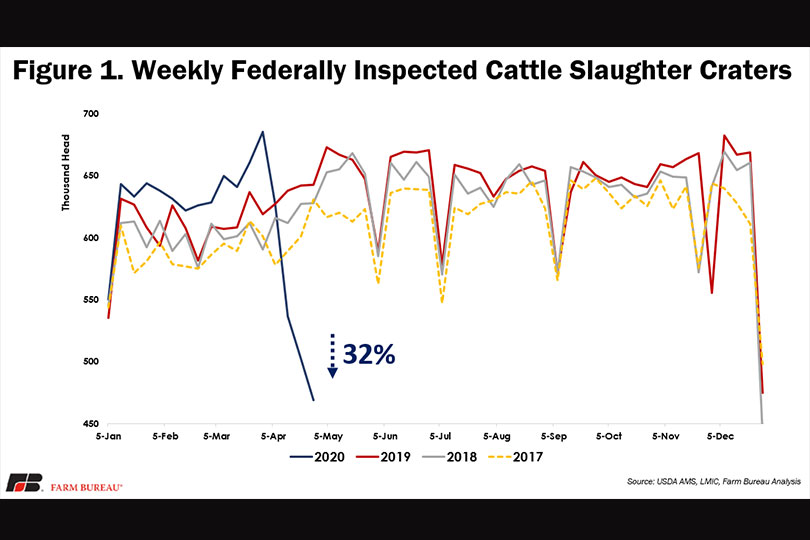During the past few months, several American meat processing facilities have shut down because workers became infected with coronavirus. Worker safety is a big concern within the industry, American Farm Bureau Federation economist Michael Nepveux said.
“So far, we know it’s been well over 20 facilities that have closed down. In some cases, those closures are due to outbreaks within the facilities among the workers, and in other cases, it’s already a struggle to keep labor in these plants,” Nepveux said. “When workers are afraid of getting sick or having vulnerable populations living with them at home, it makes them think twice about coming into the plant.”
There is some good news as facilities like the JBS plant in Greely, Colorado, have reopened its doors. It’s hard to nail down exactly how the processing capacity has been affected by the shutdowns, but Nepveux said it’s not been a positive impact.
“Pork processing capacity has been reduced by as much as 20 percent at a certain time, and beef processing capacity has been reduced by as much as 10 percent, and that’s just from the plants that had to close down,” he said. “What’s more difficult to quantify is the reduction in capacity that occurs as plants slow their line speeds in order to implement social distancing within their facilities.”
The lower processing capacity has had a significant negative impact on slaughter numbers since the pandemic started to spread in the United States.
“Cattle slaughter has declined by 32 percent from its March high, and 27 percent below the same week last year,” he said. “Before the spread of COVID-19, we were expecting a record year for beef and pork production, so that’s a pretty drastic drop. Hog slaughter has declined by 30 percent from its March high, and it’s declined to just under two million head in the most recent week. That’s about a 15 percent decline from the same week in 2019.”
Click here for more information on meat processing capacity from AFBF’s Market Intel report.

